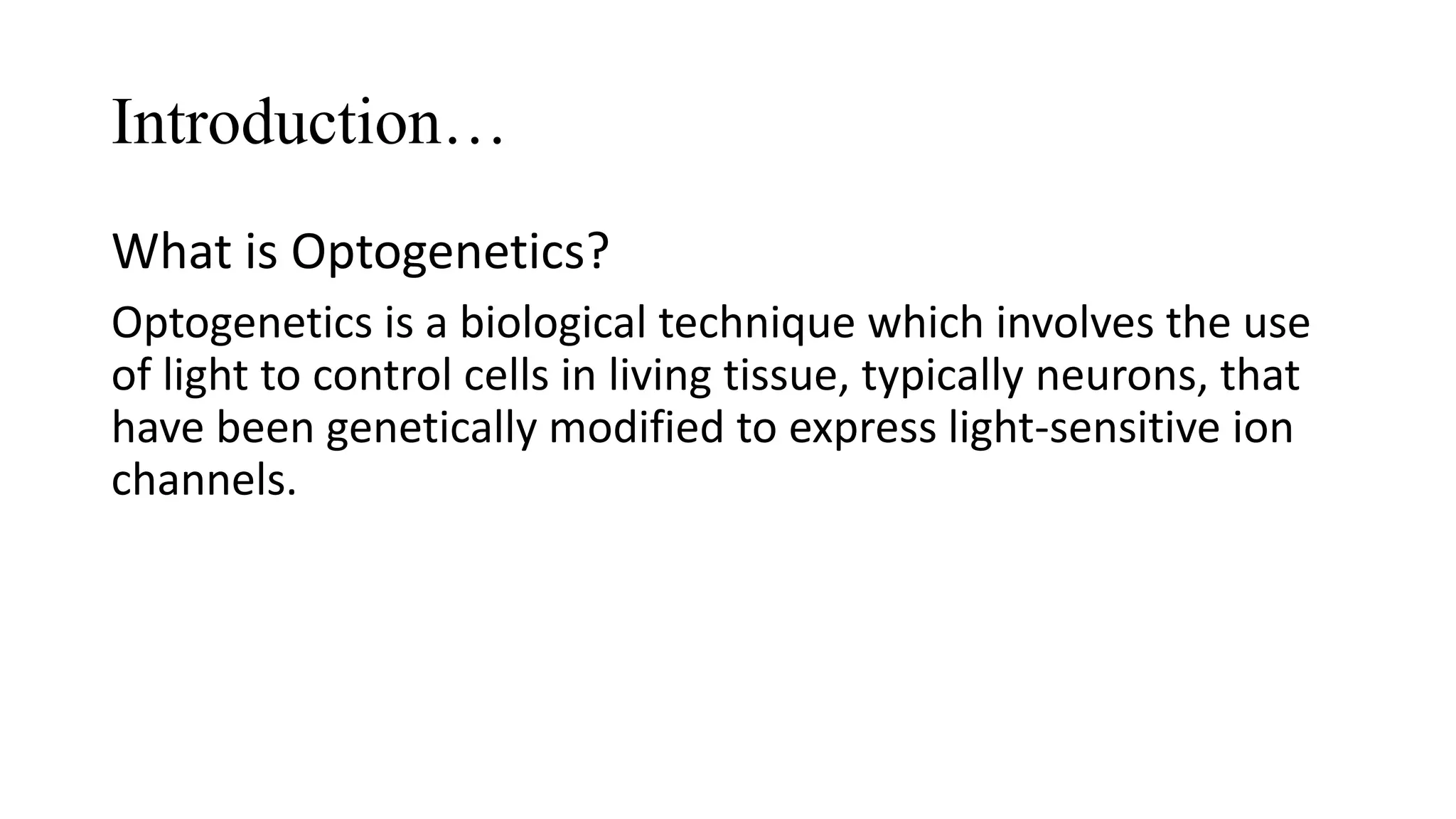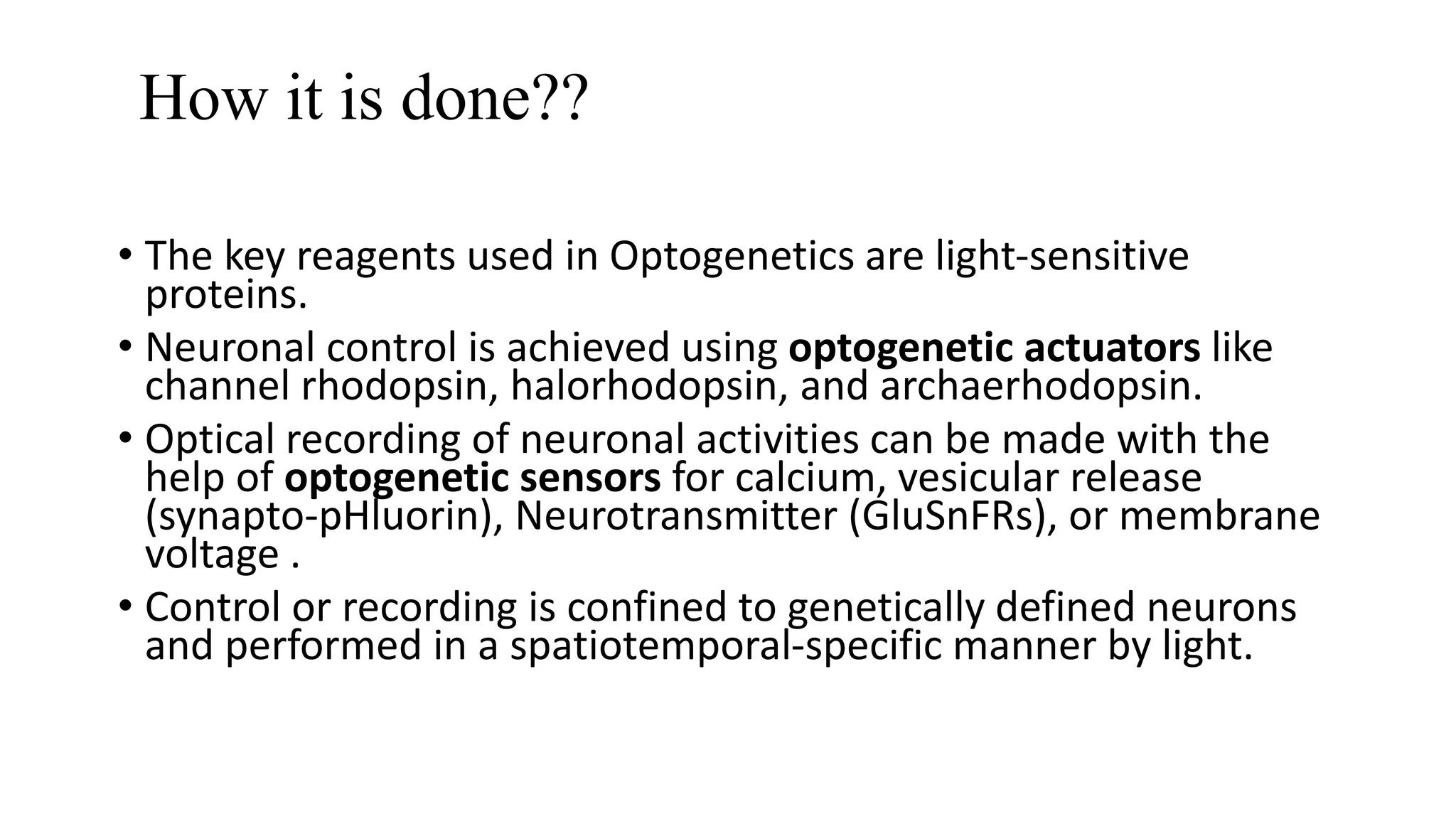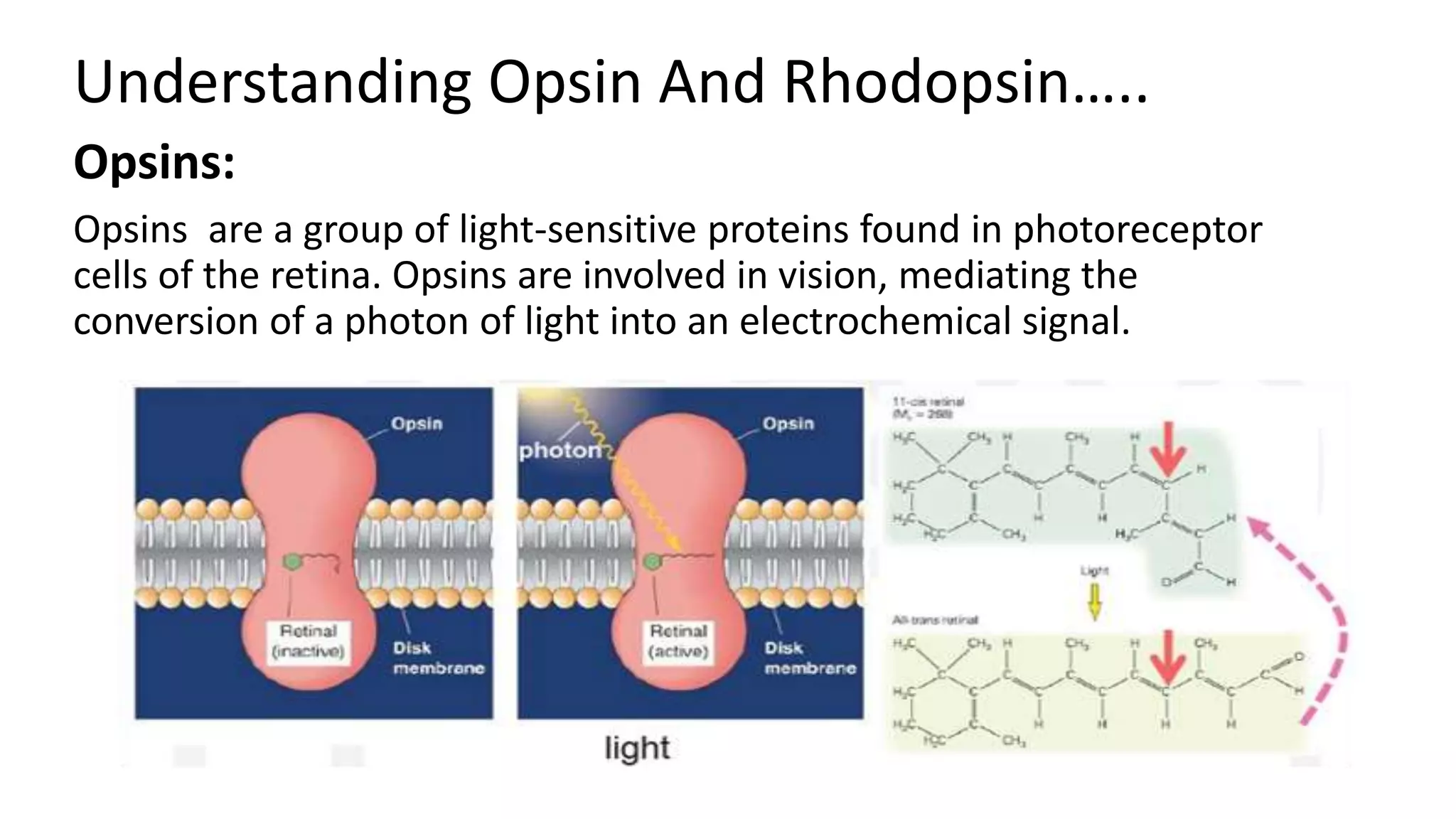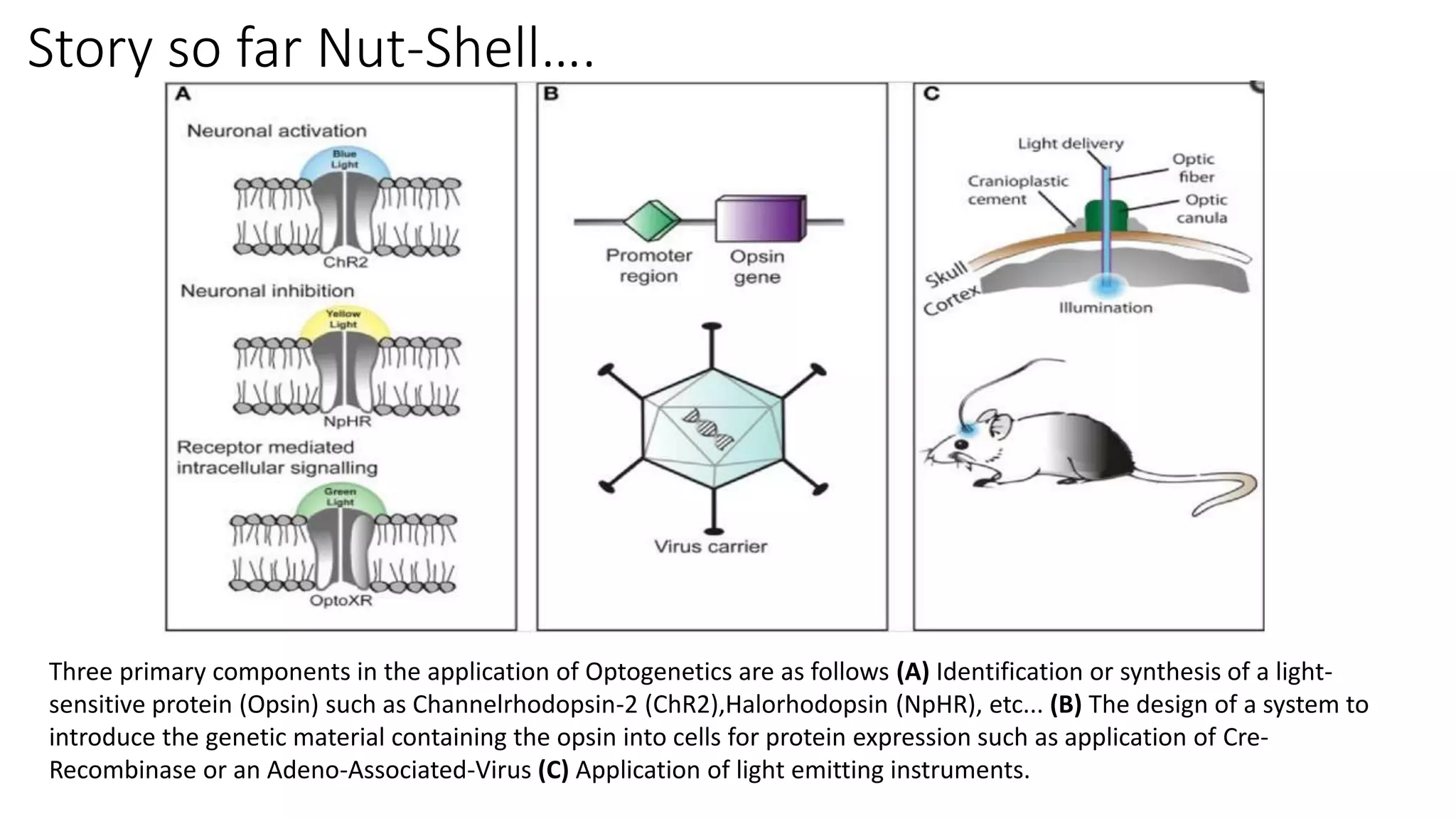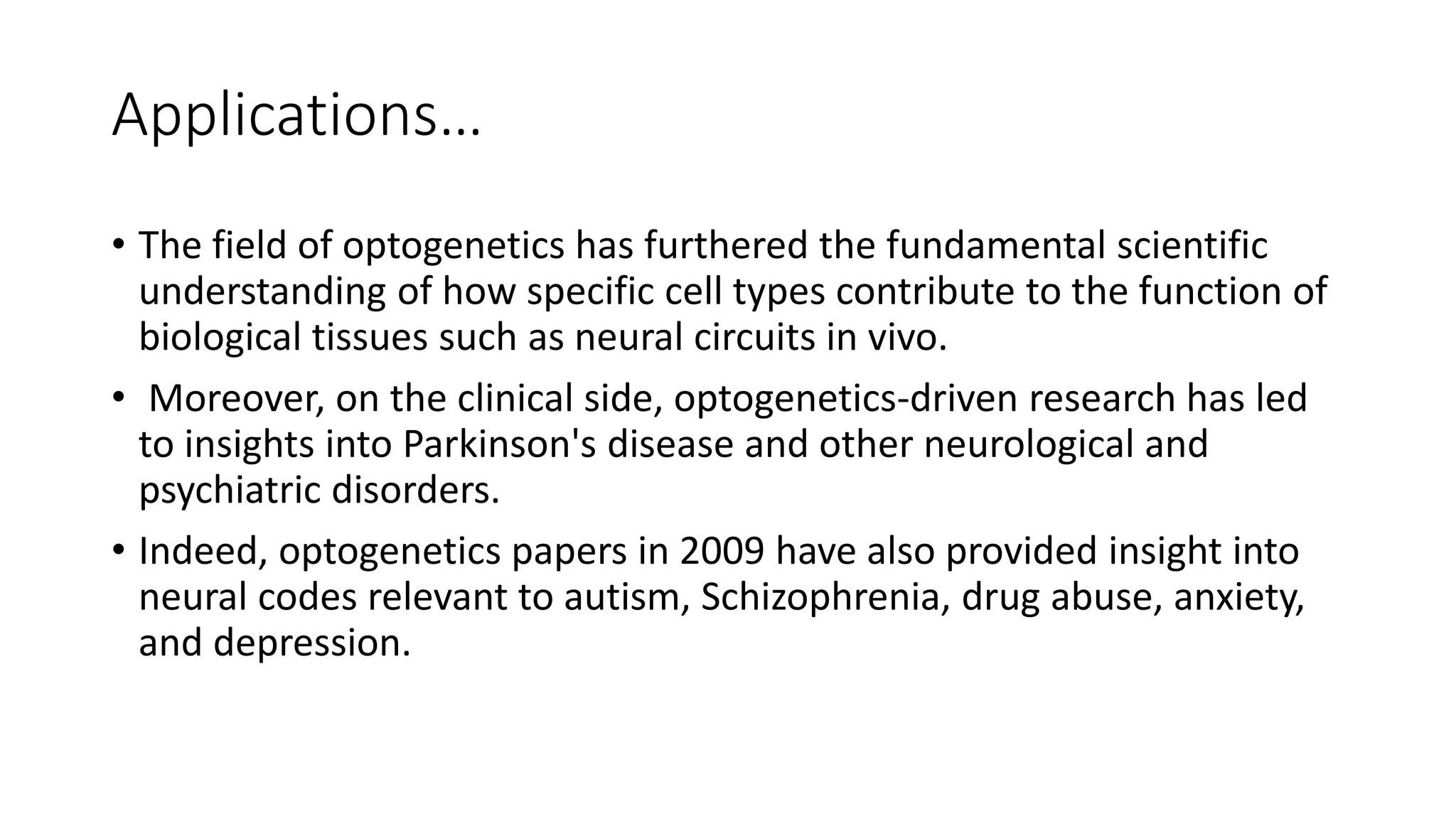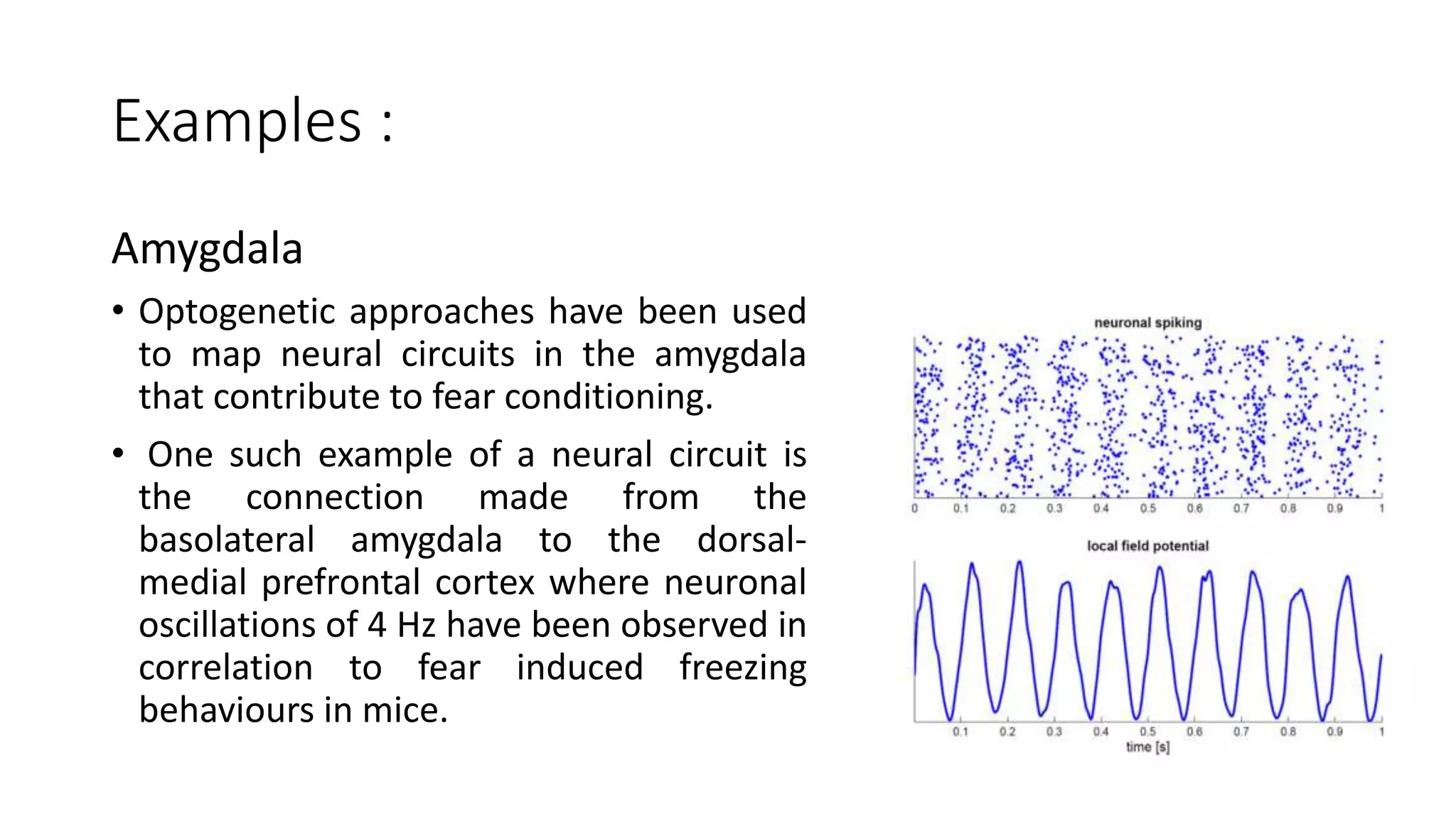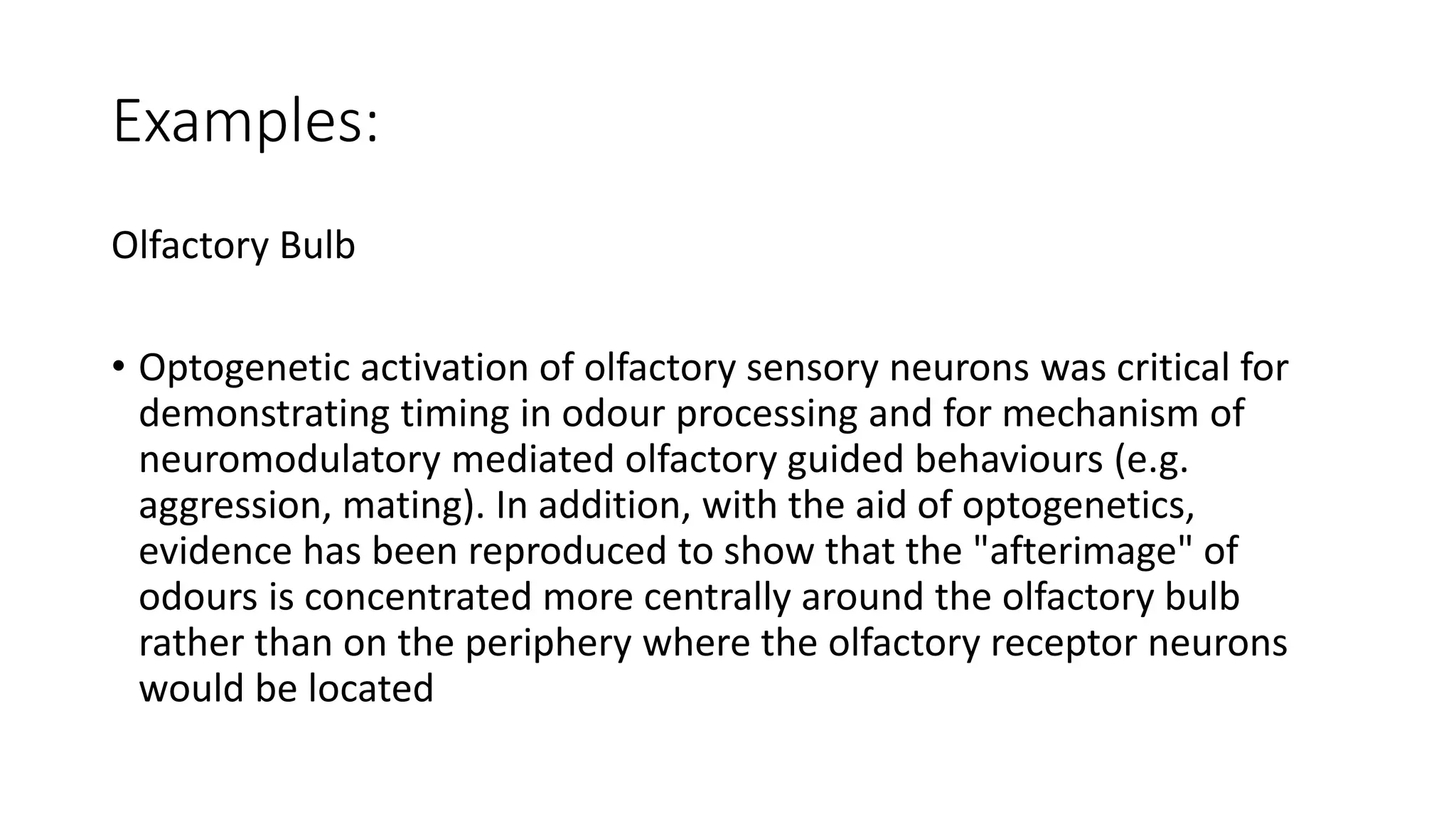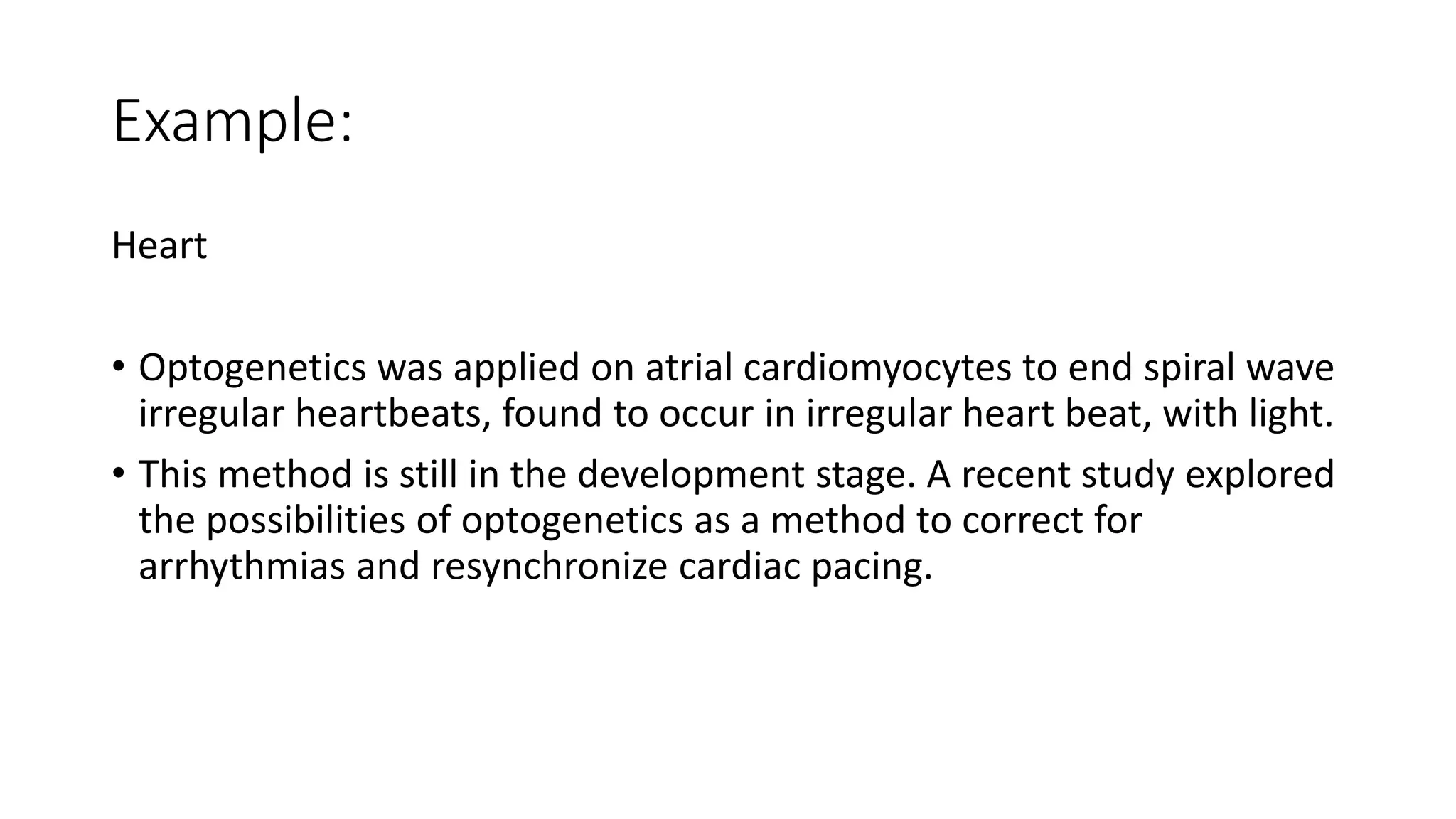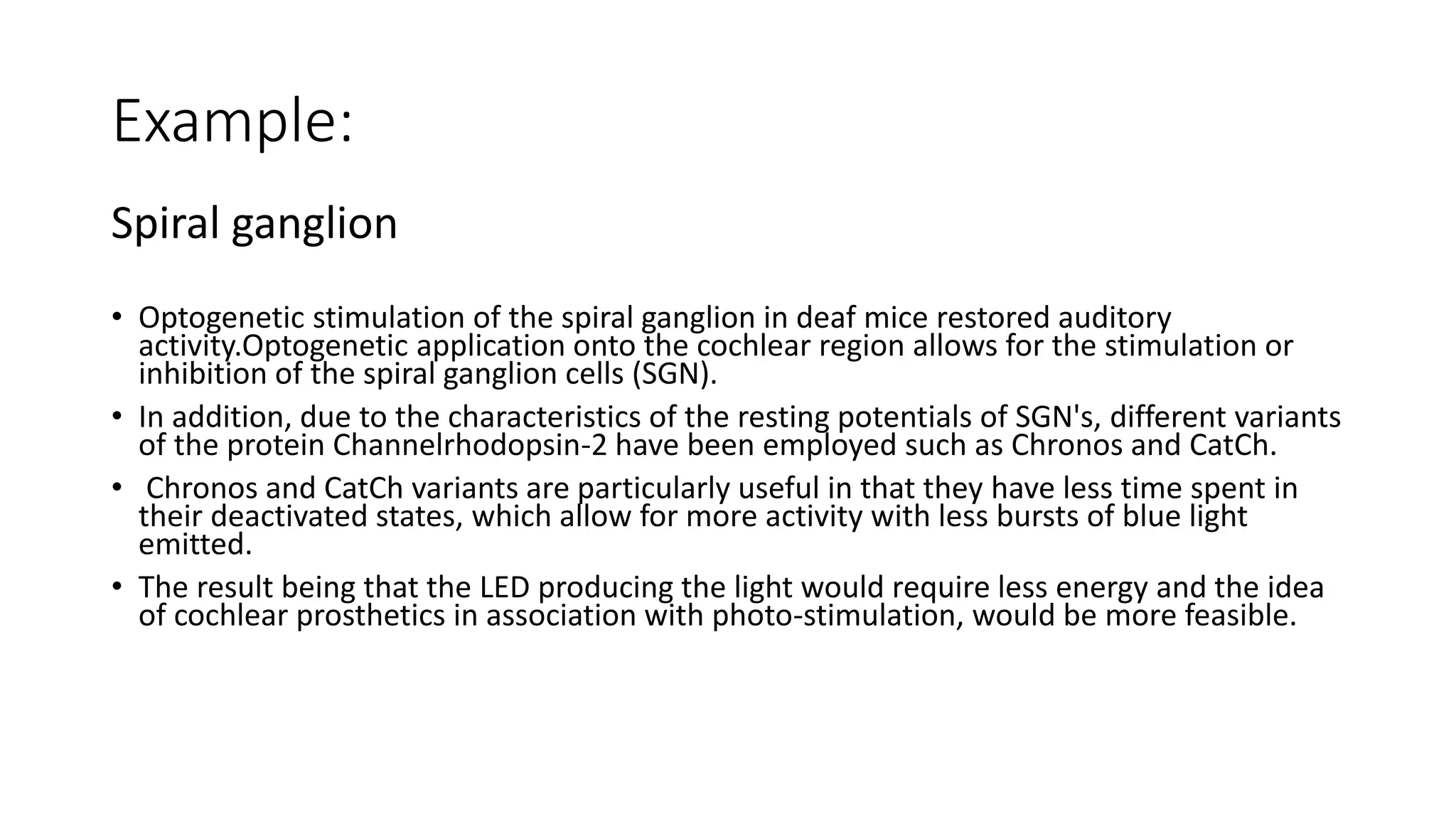Optogenetics is a biological technique that employs light to control genetically modified neurons in living tissue, providing precise measurements of neuronal activities. The presentation covers its historical development, implementation methods using light-sensitive proteins, and various applications ranging from understanding neural circuits to potential clinical insights into disorders like Parkinson's disease. Noteworthy applications include mapping fear conditioning circuits in the amygdala and restoring auditory activity in deaf mice.



